We started off the trip in Delhi, where we visited Humayun's tomb, built in the 1570--the first "garden tomb" in India, bringing in the Persian "charbagh" style gardens, and a template for designs that you continue to see developed throughout the Mughal period and later. The charbagh style garden was supposed to represent the gardens of paradise, depicted as a square divided by the four heavenly rivers.
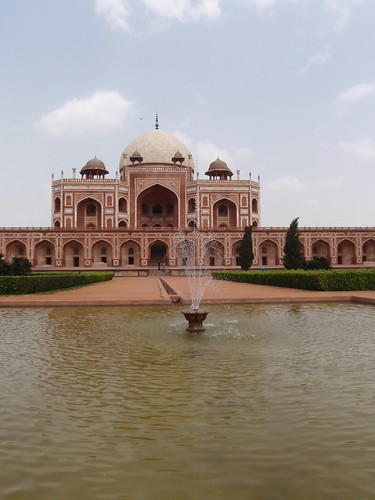
The local red sandstone is a feature that will be popping up time and again, and is one of the things that makes this and other constructions in the area so eye-poppingly unique.
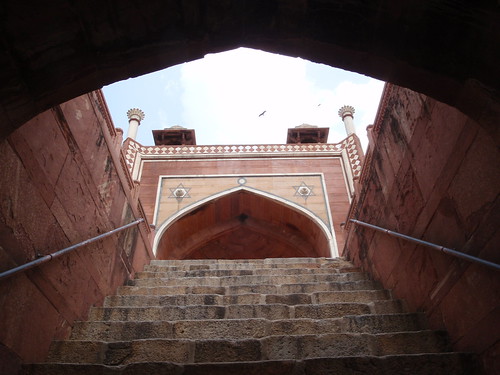
The complex builds on traditional Persian and Central Asian architectural styles, showing a remarkable appreciation for mathematics and geometry, particularly in the way it uses perspective. As my wife said, "It is great to photograph a building that knows how to work it!"
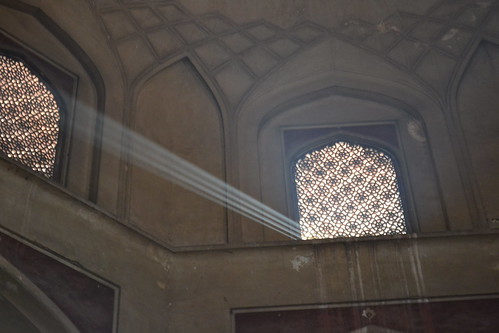
Humayun is actually buried beneath the central dome. There are 150 cenotaphs scattered around the tomb complex, indicating later burials. However, there is no indication as to who is actually buried under any of them. It is assumed that they were Mughal nobility, but nobody seems certain.

There is another large tomb in the charbagh for, of all people, his barber; or so tradition states. We don't know who is there, but the tomb can be dated to the 1590s. The common story is that it was built for Humayun's barber and confidant--after all, you had to trust the person whom you allowed with a razor that close to the royal throat!
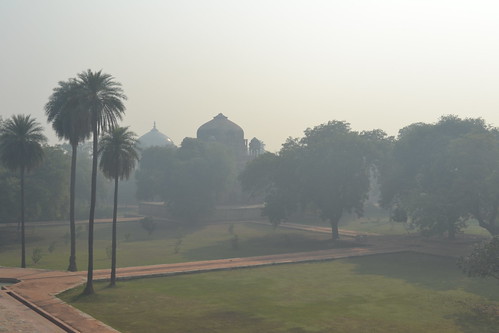
Humayun's tomb is part of a larger complex was built next to (and inclusive of) the octagonal tomb of previous Delhi sultan Isa Khan Nyazi, which has been on the site since 1547.

The complex was meant to be visited; a portion was set aside with quarters where travelers could stay, known as the "arabserai" ("serai" indicates a location to stay--whether inn, fort, harem, etc.). This is a common feature of many Indo-Islamic complexes.
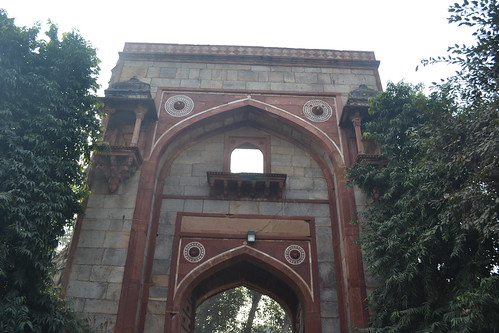
From the tomb for the second Mughal emperor, we headed back in time with the Qutb Minar complex. This World Heritage site was built in 1192 by Qutbu'd-Din Aibak to celebrate Mohammed Ghori's triumph over the Hindu rajputs.
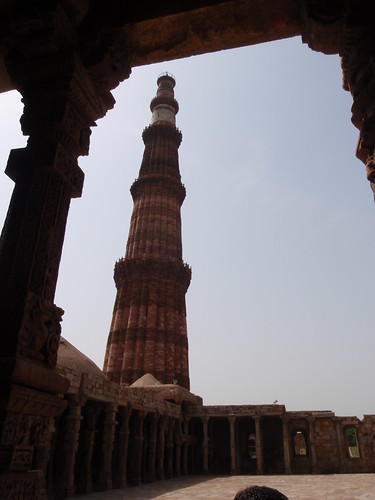
It reused stones from various local temples that were dismantled by the conquering Islamic forces. The images of deities were often defaced except where they would not be seen--of course, with the subsequent erosion of the temple, many of those have come to light.
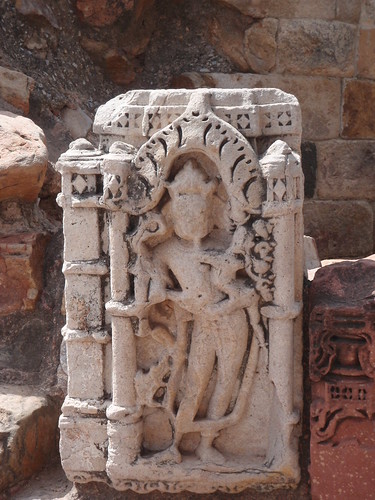
Besides being one of the oldest examples of Indo-Islamic architecture, the minaret is the highest stone tower in India. It was built in stages. After the first storey, the next three were added by Qutbu'd-Din's successor, Samsu'd-Din Iltutmish. After the top storey was destroyed in a lightning strike, it was replaced and a fifth storey added by Firoz Shah Tughlaq in 1368. Later repairs were conducted in 1503 and 1803, with some further back-and-forth renovations during the period of the British Raj.
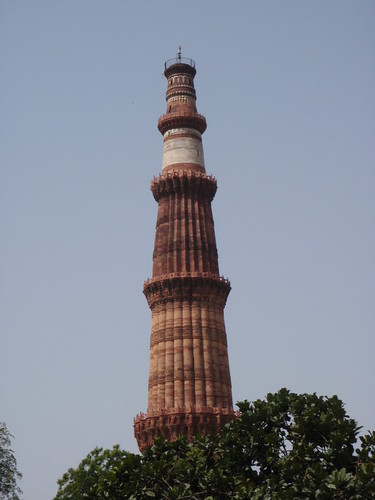
A second tower was begun by Ala ud din Khilji in 1311 which would have exceeded the original minaret, but it was never completed.
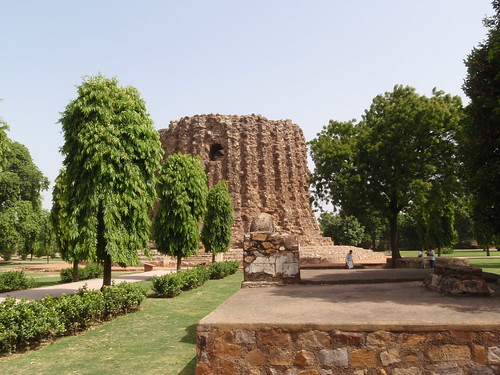
The congregational mosque (Qubbat-ul-Islam) that was built as part of the complex is not in such great shape, but the borrowed stone is great for a sample of traditional Hindu (specifically Jain) temple architectural features.

In addition, there is an iron pillar erected in the center of the mosque that was brought from elsewhere. It is dated to the 4th century and mentions a king "Chandra", generally thought to be Chandragupta II. It is remarkable in that it has not rusted away--experts are unsure of how it was made, given its size and apparent metallurgical consistency.
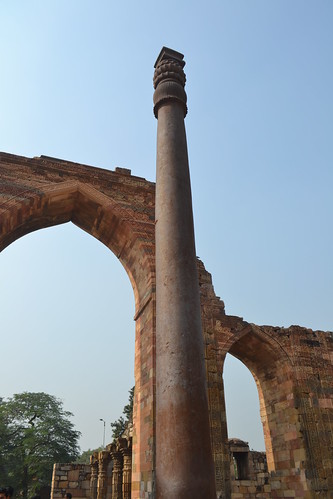
Next up, Agra and Fathepur Sikri!
No comments:
Post a Comment